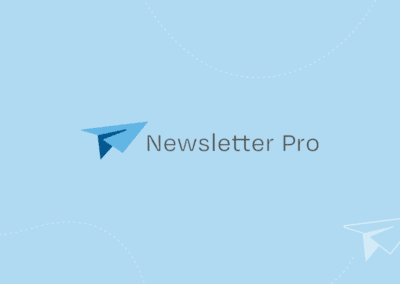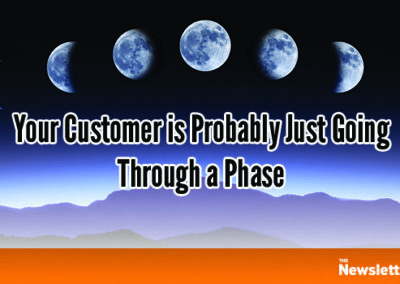According to recent data from 2021, 96% of small businesses say they use social media in their marketing strategy. If you’re in that 96% of business owners, then you might be surprised to learn that you may be making some simple (and avoidable) social media mistakes. In this blog, we’re going to be discussing 5 of our top picks for social media blunders that you’ll want to avoid.

You’re On Too Many Platforms.
Does your business need to have a page on every social media platform? The short answer is “No.” The long answer is that you should dedicate most of your time and energy toward platforms that make sense for your business.
For example, a trendy makeup company might see great success on Instagram because nearly 1 in every 3 users is a woman under the age of 35. It’s also a popular place for e-commerce brands because 54% of Instagram’s users have made purchases after seeing a product or service on Instagram. By contrast, a roofing company might see more success on Facebook, where users are more likely to be homeowners. It all depends on where your audience is and where you’re seeing the best results.
So if you’re not seeing results on a platform, then it might be best to take a step back and focus your efforts where you’re better able to connect with your prospects. This will keep you from expending effort and taking time to create content for platforms that are not seeing reasonable ROI.
You’re Posting The Exact Same Content Across Platforms.
Lots of small businesses take a one-size-fits-all approach to social media content. They use social media management platforms like Hootsuite to easily distribute identical content across multiple platforms with the intention of saving time and increasing their reach. But not all social media platforms are the same, and you’re doing your business a disservice if you’re not tailoring your content accordingly.

For example, LinkedIn is a professional platform designed primarily for networking, hiring, and sharing business-related content. So if you’re posting the same silly cat memes on LinkedIn that you are on Facebook, you’re not utilizing the platform correctly, and it could be off-putting to your followers.
There’s also the potential that some users follow you on multiple platforms. If that’s the case, they might not appreciate being exposed to the same posts every time they get on Twitter, LinkedIn, Facebook, or Instagram. They may even unfollow you, and that’s certainly not something that will benefit your business. It’s important to keep those users in mind if you are cross-posting on a regular basis.
To be clear, we’re not saying cross-posting is never acceptable. Cross-posting can actually be an asset to your business if done properly. But it should be done sparingly, carefully, and certainly shouldn’t apply to every post. If you do decide to cross-post, you should also be aware that the message, images, and links should be edited to be appropriate for the specific platform they are being posted on. This will keep your content engaging and will provide more value to your followers.
You’re Not Responding To Messages And Comments.
Or you’re just not responding quickly enough. That can be a tall order with 40% of consumers expecting brands to respond within the first hour of reaching out on social media, and 79% expecting a response in the first 24 hours. But responding to inquiries in a timely manner is essential if you want to grow your business using social media.
One way to make this process easier is through a social media management tool like Hootsuite. Hootsuite allows you to answer all of your business’s social media messages and comments from Facebook, Instagram, Twitter, and LinkedIn in one combined inbox. That makes checking on and answering your messages a much quicker and simpler process and can help ensure that you don’t miss important messages on lesser-used platforms.
Comments are important as well. Even if a comment doesn’t require a response, leaving a “like” on positive comments can be a quick way to show your audience that their engagement matters to you.
You’re Focusing On Quantity Over Quality.
You do not have to post every day.
Let me repeat that.

You do not have to post every day.
If you are posting every day and you’re getting a lot of engagement each and every time, that’s great. But you do not have to post just for the sake of posting. In fact, some companies have seen great results from reducing their social media posting and focusing on making sure that their posts were adding value for their audience.
For example, Buffer, a very popular social media management company, saw a three-fold increase in engagement when they reduced their Facebook posting from 4–5 times per day to 1–2 times a day. This allowed them to focus on only releasing their best content, which was more interesting to their audience. Their followers were also less overwhelmed with content and were more likely to engage with Buffer as a result. It’s all about making sure that you’re keeping your audience’s needs top of mind.
You’re Not Optimizing Over Time.
You need to be tracking your metrics for social media and optimizing your strategies over time. Otherwise, you’re always going to be fighting an uphill battle.
Most social media platforms and social media management tools keep track of certain metrics such as the number of likes, which posts are the most popular, the amount of organic traffic you receive, and more. It’s important to make sure that you are taking this data into account and using it.
For example, if you’ve noticed that your 1 p.m. Facebook posts get more engagement than your 5 p.m. Facebook posts, then stop posting at 5 p.m. Experiment with posting at different times and use that data to determine when your audience is the most likely to be active. Or if you’ve noticed that your photo album posts get more engagement than your stationary image posts, make a concerted effort to put more photo albums into your content mix.
It’s that simple. Making small, concerted efforts to optimize your social media strategy based on data will help you to get better, more consistent results over time and get the most out of your campaigns.






